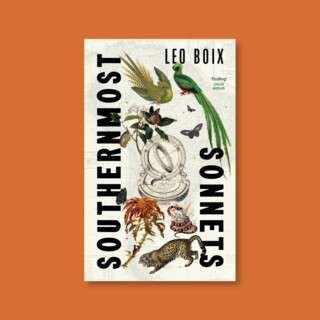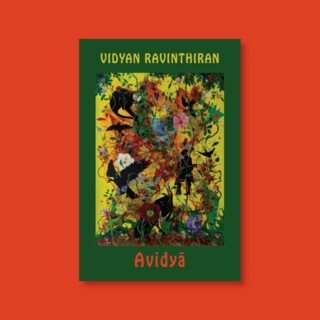On falling asleep: an extract from Carol Mavor’s ‘Aurelia’
Posted by Carol Mavor

EVENT: Carol Mavor is at the Bookshop on Monday 24 July to discuss her latest book Aurelia, on the very particular place that fairy tales hold in our culture and in the popular imagination, with Marina Warner. Book tickets here.
Alice in Wonderland begins with our little heroine feeling ‘very sleepy’. And then the great fall: ‘Down, down, down. Would the fall never come to an end? “I wonder how many miles I’ve fallen by this time?” she said aloud.’
Axel Hoedt, ‘Bear’, Sachsenheim, Germany, 2013, from the series ‘Once A Year’
‘I’m falling asleep. I’m falling into sleep and I’m falling there by the power of sleep. Just as I fall asleep from exhaustion.’ This is how the first three lines of Jean-Luc Nancy’s The Fall of Sleep (2007) fall into place, cascading, like a waterfall. The original French title of Nancy’s book, Tombe de sommeil, insists on the multiple transformations of the word tombe. As Charlotte Mandell, the translator of the book into English, explains: The original French title of this book is Tombe de Sommeil, which means ‘Tomb of Sleep.’ Or ‘tombstone of sleep’ or ‘monument of sleep.’ ‘Tomb,’ however, and its relatives, does not have the same resonance for English-speaking readers as it does for French readers, who feel its connection to the verb tomber, ‘to fall.
Nancy’s book, like Alice in Wonderland, unbegins in the middle of falling asleep, falling between death and life. ‘Like death, sleep, and like sleep, death – but without awakening.’ Likewise (as has already been touched upon), sleep is like death in two of the best-known Grimm fairy tales: ‘Briar Rose’ and ‘Snow White’. In Philip Pullman’s translation of the Grimms’ ‘Snow White’, we get this: ‘And slowly she woke up, and then she pushed open the lid of the coffin and sat up, fully alive once more. “Dear God, where am I?” she said.’
Axel Hoedt, ‘Stork’, Endingen, Germany, 2013, from the series ‘Once A Year’
Sleep is a fall into another world, in which the body loses itself and experiences an internal transformation. Sleep turns all of us into Morpheus, the ancient god of dreams who appears in Ovid’s Metamorphoses, the one who is ‘the master mimic, the quickest of all to capture a person’s walk, his facial expression and tone of voice’. Yet sleep itself, according to Nancy, is not metamorphosis. The morphing is internal: there is no sign of the transformation on the external body. ‘At the very most it could be understood as an endomorphosis.’ (An ‘endomorph’ is a person with a soft, round build.) The ‘endomorphosis’ (endomorphose) takes place under eyelids shut closed. The slumberer softens into other worlds, within a shell of sleep. A mollusc buttoned.
Or, perhaps, with a Carrollinian nonsense-inflection, like the Dormouse stuffed into the teapot. The Latin dormire (meaning to sleep) is at the heart of the etymology of the dormouse, a squirrel-like creature who hibernates in winter and is also nocturnal. The latter explains why Carroll’s Dormouse is in such a torpid state at the Mad Tea Party, even during the month of May (the month of Alice’s adventure). In the middle of sleeping and waking, the Dormouse is a night owl who could use a cup of tea.
Nancy, whose book entitled Listening opens up the aural (for ‘the ears don’t have eyelids’15), might have heard in endomorphose a bit of the French endormir (to put or send to sleep) or even the fairy-taleish French endormeur (beguiler).
Axel Hoedt, 'Leading a Branch Bear', Empfingen, Germany, 2013, from the series ‘Once A Year’
As Morpheus, the ‘I’ dissolves behind the closed eyes of sleep, transforming ‘the pure matter of sleep into form’. To dream is to be in a darkened movie theatre (‘a veritable cinematographic cocoon’). Vanished husbands, strangers, child-selves, mothers, fathers, friends, neighbours, even the famous, emerge on the screen of our mind’s eye, like cinema. The sleeper, like Roland Barthes’ movie spectator, adopts ‘the silkworm’s motto: Inclusum labor illustrat; it is because I am enclosed that I work and glow with my desire.’ Endless characters and things and places drop into the fall of sleep.
Like participants in one of those mysterious pagan festivals of the Lenten season (as photographed by the portrait and fashion photographer Axel Hoedt), when we fall into a slumber, we are creatures in a liminal state: not only between sleeping and waking, but often between people, places, animals, plants and things.
We become bear-man (our human eyes and shiny nose peek out from the beast’s furry throat). A stork in white satin shorts, red tights and Hans Christian Andersen red shoes with rhinoceros-horned toes, whose eatingmagination has a penchant for little red-capped Punch. A tree-branch-bear-man taken for a walk, with a heavy rope fit for a horse. A puss-in-boots man, whose velveteen-rabbit dress is part nineteenth-century schoolboy and part twenty-first-century motorbike rider. His empty eye-sockets are black Os into the unconscious. Hoedt’s in-the-middle-of-things animal-people (and even tree-people) hark back to the Duchess’s sneezing baby as it is becoming a pig:
‘Don’t grunt,’ said Alice; ‘that’s not at all a proper way of expressing yourself.’ The baby grunted again, and Alice looked very anxiously into its face to see what was the matter with it. There could be no doubt that it had a very turn-up nose, much more like a snout than a real nose; also its eyes were getting extremely small for a baby: altogether Alice did not like the look of the thing at all.
‘Aurelia’ is published by Reaktion, priced £25. Join Carol Mavor and Marina Warner for an exploration of the power of fairy tales at the Bookshop on Monday 24 July. Book tickets here.




